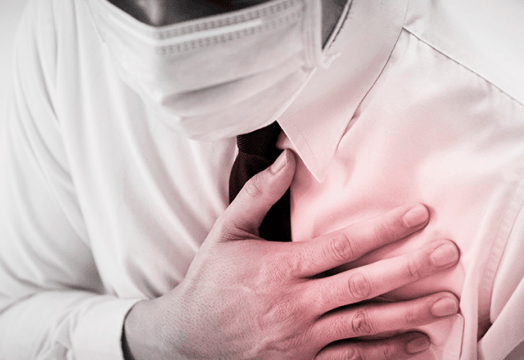The pandemic tsunami of COVID-19 has hit all cath lab services, especially those performing primary PCI.

Passively waiting for the first patient suspected of infection only to improvise in the early hours means heading for disaster.
Several scientific societies have published recommendations, but not based on clear data.
It seems pertinent to bear in mind a few common-sense priorities.
For years, team safety has focused on radioprotective measures. Today, team safety continues to be the priority, but for now we are focusing on the virus. Both for team health and to protect our capacity to keep saving lives.
Time to revascularization is still important, but investing a few minutes in protecting ourselves with appropriate gear will not change patient prognosis.
Read also: Special Articles on COVID-19.
In addition to the usual lead apron, caps, gowns, goggles, and gloves, we should add shields, glasses, and N95 masks or similar.
The chief of service is the ultimate responsible of their team and should make sure of the following:
- Stock up on all personal protection gear
- Train the team (again and again). Personal protection gear should be a “natural” part of the team. We should memorize when to put on what before a STEMI patient arrives.
- Define a clear chain of command, just as if we were at war, because we are at war.
- Do not underestimate psychological pressure on the team.
Many team members will be afraid of catching it. Many have children at home while schools remain closed. It is important to reduce workload as much as possible. It is reasonable to put off elective procedures, at least until we assess patient clinical status on the phone or some other remote way.
Read also: Covid-19 and Unaccounted Collateral Damage.
It has been accepted (and some evidence has been published) that since the beginning of the pandemic there have been fewer AMI patients. This has come as a surprise. In fact, it should be the opposite, but patients are afraid of coming in and stay at home even when they experience chest pain.
MI mortality largely outweighs the fear of catching this bug.
Patients that do consult for acute coronary syndrome can come by themselves or by ambulance. In both cases we should perform a simple triage (fever, cough, dyspnea, diarrhea, sore throat, loss of sense of smell or taste, etc.). Ideally, all patients should have a quick test to optimize patient management.
Read also: Management of Infarction During the COVID-19 Pandemic.
China, at the peak of the pandemic, recommended fibrinolytics. They did not have time to prepare, but for the rest of the world, it seems reasonable to implement a few changes in protocol to keep offering primary PCI.
The Lombardy in the north of Italy (second hot zone) counted on 55 PCI centers working 24/7 for a rough 10 million inhabitants. The system was reorganized to only 13 hospitals acting as hubs with the remaining acting as spokes. Patients were referred to the nearest hubs, and strokes.
If the cath lab is not ready at patient arrival, it will be best for them to wait in the ambulance.
Read also: Cardiovascular Sequelae Associated with COVID-19.
For patients with non-ST elevation MI, there is enough time to wait for COVID-19 test results. If they cannot be handled medically, patients should follow STEMI protocols and be discharged as soon as possible.
The plan is to prepare for the worst and hope for the best.
Original Title: Priorities for Cath labs in the COVID-19 tsunami.
Reference: Gianluca Campo et al. European Heart Journal, online before print. doi:10.1093/eurheartj/ehaa308.
Get the latest scientific articles on interventional cardiologySubscribe to our weekly newsletter
We are interested in your opinion. Please, leave your comments, thoughts, questions, etc., below. They will be most welcome.





